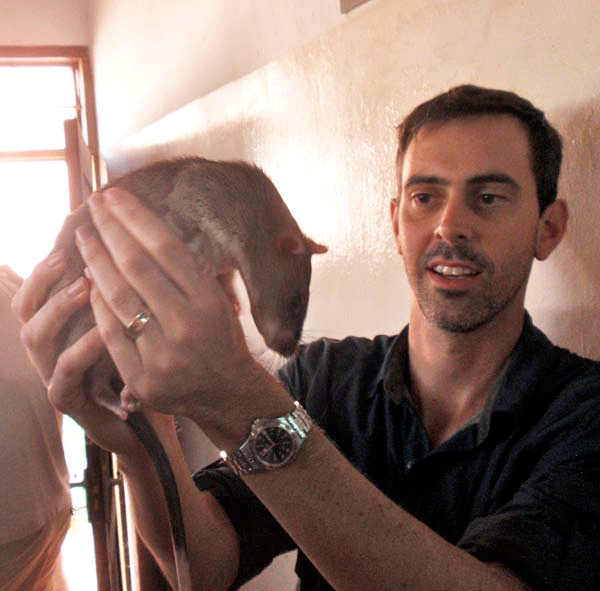OSU researcher receives $740,000 to study explosive-detecting rats
Thursday, March 3, 2011

The U.S. Army Research Office in the U.S. Department of Defense is funding the grant to get specifics it can use to screen the best animals for the job, according to Dr. Alex Ophir, assistant professor, OSU Department of Zoology. “Our team will observe the behavior of the rats in the wild and evaluate individual differences in the laboratory, including genetic markers that can help us develop a ‘profile’ to enhance the selection of the most efficient explosives biodetectors.”
Though they look much like big rats, these rodents use their cheeks as pouches to store food like hamsters and chipmunks, and are actually distant relatives to rats, said Ophir. “They’re trainable and their acute sense of smell enables them to sniff out land mines, but they’re small enough that they don’t detonate the mines.”
“While the term ‘personality’ is usually reserved for humans, animals can demonstrate consistent behavioral differences that can be loosely described as an ‘animal personality,’” said Ophir. “Profiling the behavior of the species will not only enhance the selection and use of the animals, but also offer insight into the source and expression of individual differences in behavior that can be scientifically important.”
Landmines that lay hidden in fields from current and past conflicts worldwide account for more than 1,000 deaths and more than 2,500 injuries per year, according to information from the Landmine & Cluster Munitions Monitor.
Photos available at http://www.flickr.com/photos/ostatenews/5494176733/in/set-72157626188355950/
